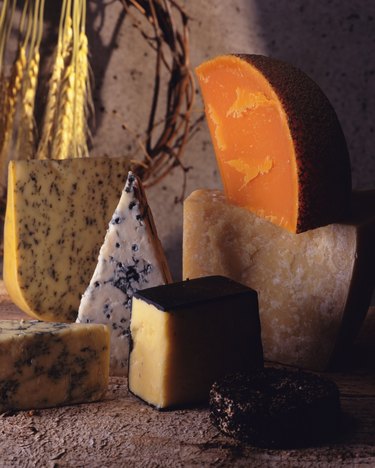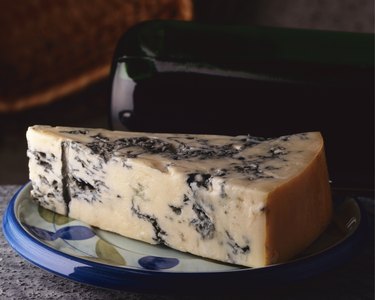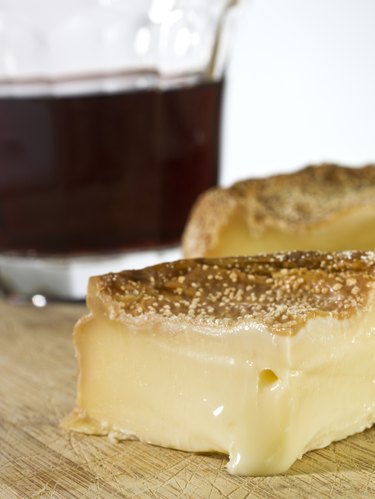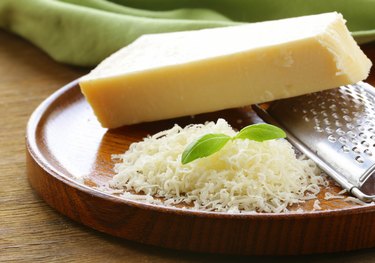
Cheese, a by-product of milk, has been made for centuries. Only a few types of cheeses are consumed immediately. Most cheeses are aged or undergo a process called ripening; the aging or ripening period varies from a few weeks to a couple of years.
As the cheese ages or ripens, it becomes harder. Each cheese develops a unique flavor, depending on the type of bacteria used and the amount of ripening. The color of the rind and cheese varies, as well, and it can be yellow, white or brown. The maturity of the cheese is monitored by touch, smell, sight and taste.
Video of the Day
Video of the Day
Blue Cheese

This cheese has a characteristic blue-green veining, so it is called blue cheese or bleu cheese. It is made from the milk of cows, goats or sheep, and has a sharp, robust and tangy flavor. To make blue cheese, molds or fungi, such as penicillium roqueforti and penicillium glaucum, are stirred into milk and left to ripen. The fungi require oxygen to flourish, so needles are pushed into it as the milk sets. The fungus draws in the oxygen, leaving a blue-green line both externally and internally. The cheese is ripened from seven or eight weeks to three months before consumption, depending on the strength of flavor desired. Common blue cheese varieties are Roquefort, Stilton, Gorgonzola and Cabrales.
Stinky Cheeses

This type of cheese is named for its strong smell and sharp taste. You can smell stinky cheese from quite a distance. The main characteristics of this cheese are a sticky orange rind and pungent smell. Some of the most popular varieties of stinky cheese are Limburger, Vieux-Boulogne and Epoisses de Bourgogne.
Stinky cheese is a soft cheese and has a smell and flavor similar to mushrooms, earth, wet hay, overripe fruits and even rotten eggs. In most stinky cheese, Brevibacterium linens is used to ripen the milk. In the Vieux-Boulogne and Epoisses de Bourgogne varieties, beer is brushed on the rind to make the enzymes react in a particular way so they impart a pungent smell. The smell of stinky cheese can be so overwhelming that in some places in France, carrying it on public transportation is banned.
Hard Cheese

Generally considered a "grating cheese," hard cheese is pigeon-holed and packed with interesting and unique flavors. The usual maturation period is years instead of weeks or months. To produce this cheese, only the best quality cultures, milk and rennet are used. The cultures are stirred into the milk, and once the curd is set, it is pressed or cooked to remove as much whey as possible. Hard cheese has a grainy, crystalline texture and intense flavor. Types of hard cheese are asiago and Parmesan.